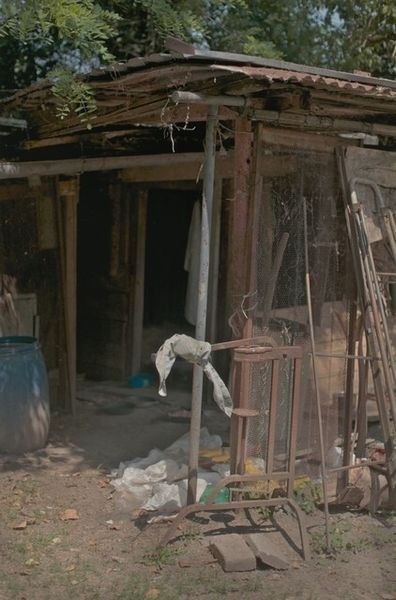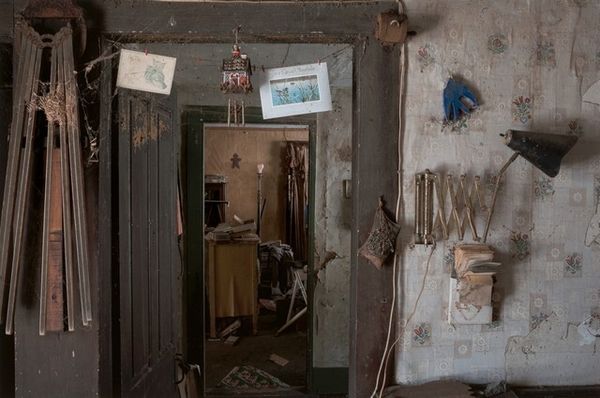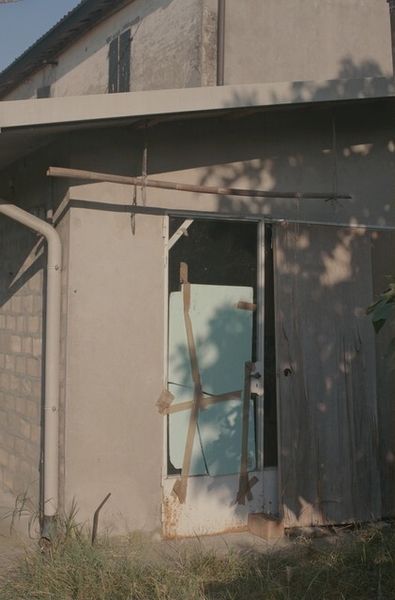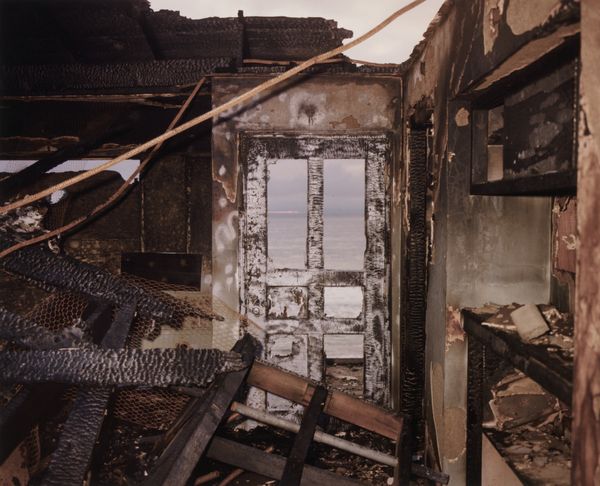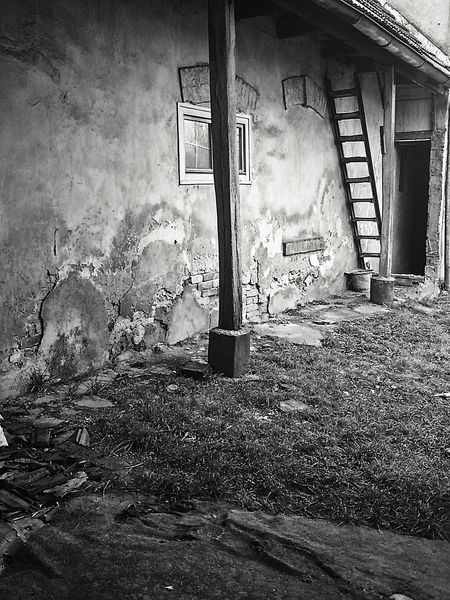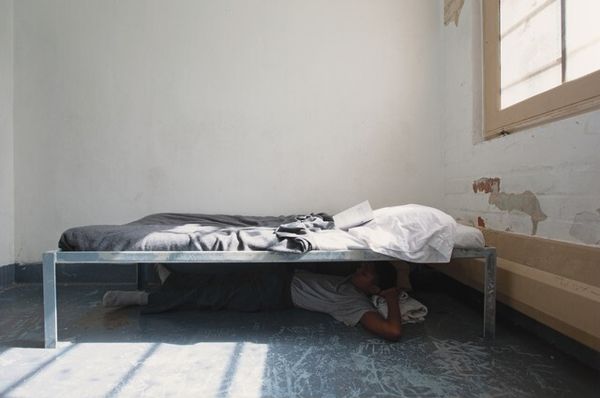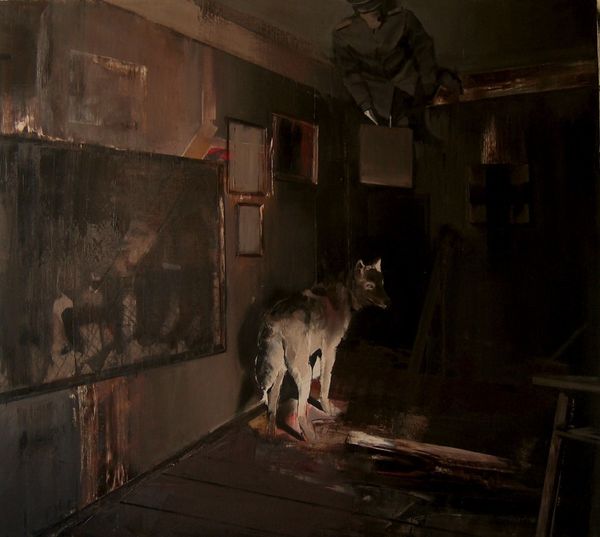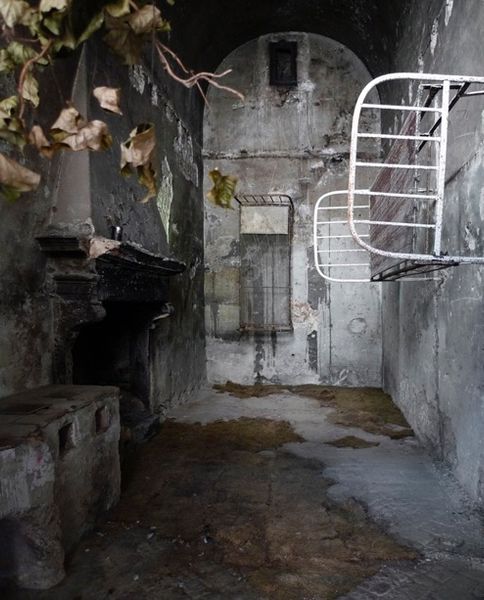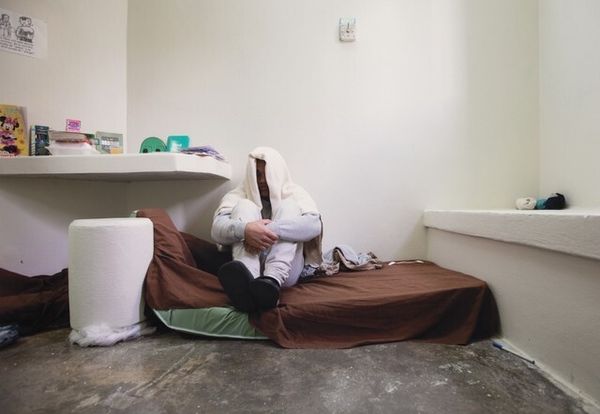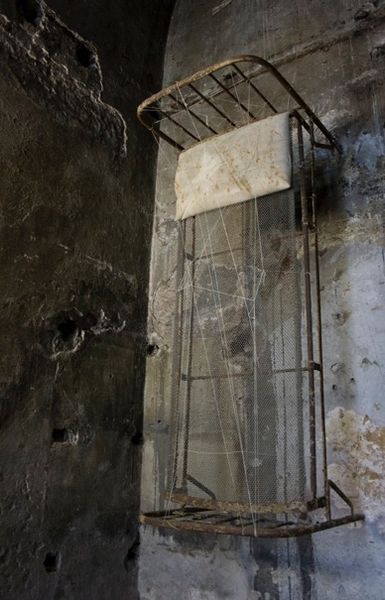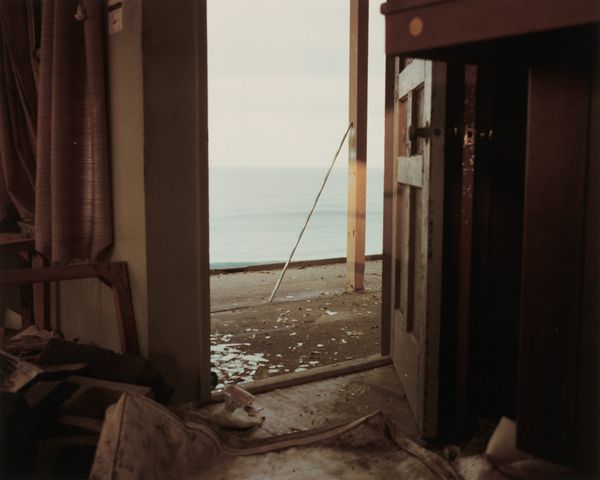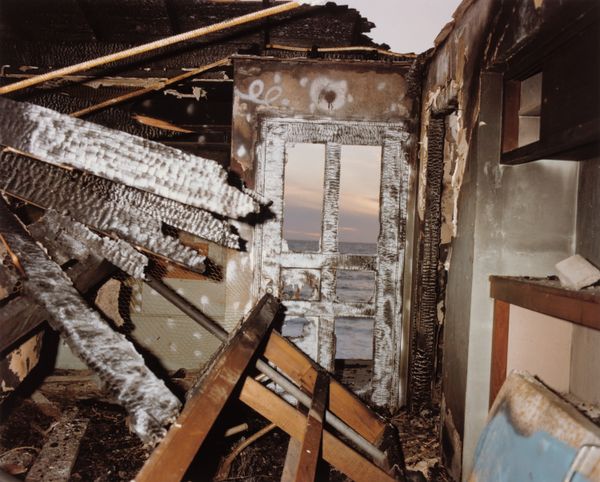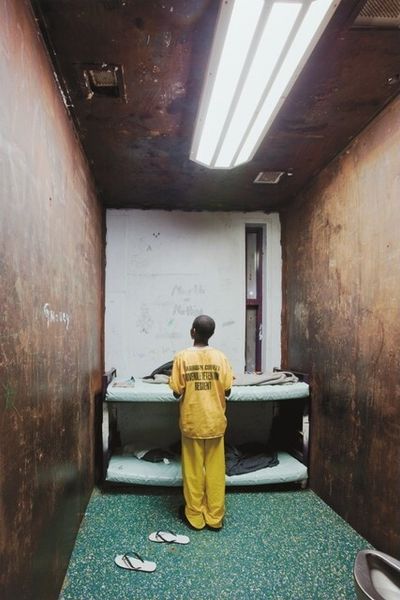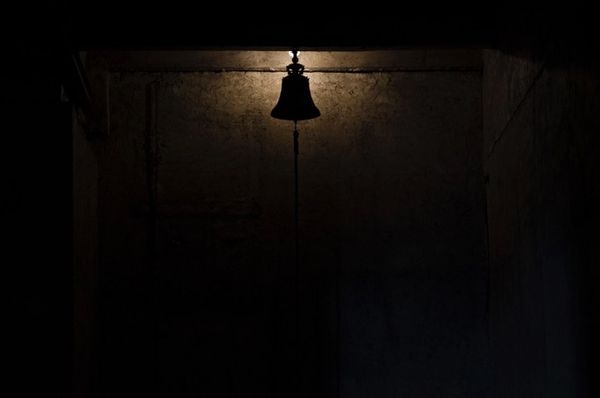
Dimensions: Overall display dimensions variable
Copyright: © Mike Nelson, courtesy Matt's Gallery, London | CC-BY-NC-ND 4.0 DEED, Photo: Tate
Curator: This is Mike Nelson's "The Coral Reef," an installation that invites us into a constructed space filled with discarded objects. I'm struck by the pervasive sense of neglect. Editor: The textures are what grab me – the rough plaster walls, the stacked tires, the exposed wood framework. This is about more than just appearances; it's about the physical act of assembly and the social reality of discarded labor. Curator: It's fascinating how Nelson creates these immersive environments. They become stages for exploring socio-political narratives, often hinting at marginalized communities or forgotten histories. Editor: Exactly! The deliberate use of found materials challenges the traditional separation between high art and the everyday. We're forced to consider the inherent value and potential of the discarded. Curator: I see it as a commentary on urban decay and the cyclical nature of consumerism, made all the more potent by the artwork's institutional context within the Tate Collections. Editor: Yes, a museum setting inevitably changes its meaning. But, regardless, the tactile quality and chaotic arrangement speak volumes about labor. Curator: Indeed, it's an artwork that prompts introspection on the systems that shape our world. Editor: A powerful example of how everyday materials, when recontextualized, can convey profound meaning.
Comments
Join the conversation
Join millions of artists and users on Artera today and experience the ultimate creative platform.
tate 8 months ago
⋮
The Coral Reef 2000 is a very large architectural installation consisting of fifteen rooms with connecting corridors. When installed in a gallery the entrance to and exit from its interior are through single doors in the gallery wall, so at no point can the exterior walls of the installation be seen. This ensures that the scale of the installation cannot be deduced from the outside. Upon entering the installation, visitors arrive in what looks like a waiting room. This leads to a shabby-looking cab office with a calendar from the Muslim Association of Nigeria attached to its wall. Beyond this point, visitors can move as they wish among a network of poorly lit and dusty passageways leading to other rooms. Despite displaying signs of occupation and use – the rooms contain furniture and various objects, while lights and screens have been left switched on – the inhabitants of the highly dilapidated and enigmatic space are nowhere to be seen. Only other visitors are encountered along the way and it is unclear from the plethora of items in each room – which visitors are not allowed to touch – who the occupants might be or what they might do. Several of the rooms are loosely themed: there is a security surveillance office, a mechanic’s garage, a room littered with drug paraphernalia, a wood-panelled lobby decorated with Americana and other spaces containing various items including advertisements for a religious gathering, Soviet English-language propaganda, a toy gun, a clown mask and an empty sleeping bag. The final room of the installation is an exact replica of the waiting room that appeared at the beginning. There is no prescribed route through the installation and visitors are allowed to spend as much time inside as they like, although entry is restricted to a small number of people at any one time.
